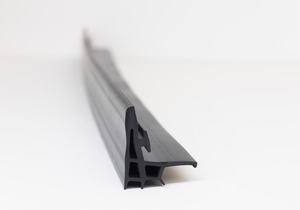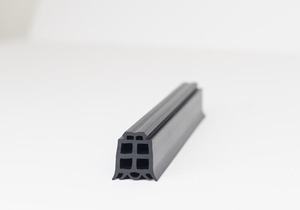








Garage door seals are essential components designed to provide effective weatherproofing, insulation, and security for residential, commercial, and industrial garage doors. These seals play a crucial role in preventing the ingress of moisture, dust, pests, and drafts, while also enhancing energy efficiency and comfort within the garage space. Here’s an extensive overview of garage door seals:
- Material Composition: Garage door seals are typically made from high-quality elastomeric materials such as EPDM (Ethylene Propylene Diene Monomer) rubber, PVC (Polyvinyl Chloride), TPE (Thermoplastic Elastomer), or silicone. These materials are selected for their flexibility, durability, and weather resistance.
- Types of Seals: Garage door seals come in various types to suit different sealing requirements. Common types include bottom seals, threshold seals, weatherstripping seals, brush seals, and astragal seals. Each type is designed to seal specific areas of the garage door, such as the bottom, sides, and top, effectively preventing drafts, water intrusion, and pests.
- Bottom Seals: Bottom seals, also known as astragal seals or bottom weatherstripping, are installed along the bottom edge of the garage door to create a barrier against drafts, moisture, and debris. They typically feature a flexible rubber or PVC strip that conforms to uneven surfaces and seals gaps between the door and the floor.
- Threshold Seals: Threshold seals are installed at the threshold of the garage door opening to create a watertight seal between the door and the floor. They prevent water from seeping under the door, especially during heavy rain or snowfall, and help maintain a dry and clean garage interior.
- Weatherstripping Seals: Weatherstripping seals are installed along the sides and top edges of the garage door to seal gaps and prevent air infiltration. They feature a compressible rubber or foam strip that conforms to the door frame, creating a tight seal when the door is closed.
- Brush Seals: Brush seals, also known as bristle seals or draft excluders, consist of a row of flexible bristles or filaments that form a barrier against drafts, insects, and debris. They are often used along the sides and top edges of the garage door, providing effective sealing while allowing for smooth door operation.
- Insulation Properties: Garage door seals help improve the insulation of the garage space by reducing heat loss in cold weather and heat gain in hot weather. By sealing gaps and preventing air leakage, they contribute to energy efficiency and temperature control within the garage, resulting in greater comfort and reduced heating and cooling costs.
- Soundproofing: In addition to weatherproofing and insulation, garage door seals also help reduce noise transmission between the garage and the surrounding environment. They dampen sound vibrations and minimize noise from street traffic, neighbors, and other sources, creating a quieter and more peaceful indoor environment.
- Security Enhancement: Garage door seals not only provide weatherproofing and insulation but also enhance security by sealing potential entry points for intruders. By preventing gaps and gaps around the door, they help deter unauthorized access and protect valuables stored in the garage.
- Easy Installation and Maintenance: Garage door seals are designed for easy installation and require minimal maintenance to ensure long-lasting performance. They can be installed using adhesive backing, screws, or clips, and periodic inspection and cleaning are recommended to keep them in optimal condition.
In summary, garage door gaskets are indispensable components that provide effective weatherproofing, insulation, and security for residential, commercial, and industrial garage doors. With their durable construction, versatile designs, and ability to seal gaps and prevent air infiltration, garage door seals contribute to energy efficiency, comfort, and protection for garage spaces and the belongings stored within them.
